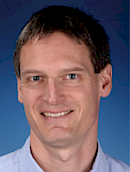AASP Newsletter - May 2018
Editor's Note
Sebastian Brueckner, PhD, CMPC, Münster University, Münster, Germany
 |
“It's the little details that are vital. Little things make big things happen.”
~ John Wooden
Little things making a big difference: this was likely key to what happened a few months ago at the 2018 Winter Olympics in Korea. Germany upset hockey power-houses Sweden and two-time defending Olympic Champion, Canada, to win the silver medal. Small details are what made big things happen for the German team, allowed them to come together, and build, step-by-step, to an unexpected success story. The Olympics provided many of these inspiring moments, unexpected upsets, and exciting success stories, which were all covered by the media. A mostly unnoticed part of the Olympics, however, was a growing group of international sport psychologists, working on many little details behind the scenes, that can make all the difference at the Games. Canada sent the largest number of mental performance consultants of any country to PyeongChang. Looking ahead at the Annual AASP Conference from October 3-6 in Toronto, Ontario, it will be exciting to learn from Canadian World Hockey Hall of Famer, Eric Lindros, and Penny Werthner, one of Canada’s most distinguished sport psychology consultants, about how they made things happen at the PyeongChang Games and throughout their distinguished careers. AASP’s SIG “International Olympic Sport Psychology”, coordinated by Peter Haberl, helps in documenting the involvement of sport psychologists at the Games and connects colleagues on an international scale.
As far as AASP SIGs go: In her President’s Report in the January Newsletter, Amy Baltzell pointed out some outstanding numbers that represent the many little details that ultimately make up the AASP organization; an association that, through its several cohesive pieces, is achieving advancement of the field of applied sport and exercise psychology. The record number of 28 SIGs truly represents the broad range of interests and topics that are relevant to AASP members. At the same time, it highlights the expertise that the organization has to offer to make an impact for clients, athletes, coaches, and organizations. Yet again, basketball coaching legend John Wooden’s words, quoted above, hold true: Not only the great leadership that AASP EBoard members and committee chairs are providing, but especially the many seemingly small things that so many AASP members contribute on a SIG level and beyond, make AASP a success. Focusing on a detailed, step-by-step process, facilitated by the 2016-2018 Strategic Plan, has also been at the heart of many of AASP’s recent accomplishments. With the new CMPC Certification Exam now available, another important step has been achieved.
The Newsletter Committee is working diligently to offer the AASP membership articles that highlight the many facets of applied sport and exercise psychology research and practice. Many committees regularly contribute to our publication and we’d like to encourage SIG coordinators and members to reach out to us and inquire about an AASP Newsletter contribution as well. It is these ‘little pieces’ that will continue to make a big difference.
I want to take the opportunity to thank all contributors as well as the members of the Newsletter Committee for their great work and effort. If you want to contribute to the AASP newsletter: please email me at s.brueckner@uni-muenster.de.



